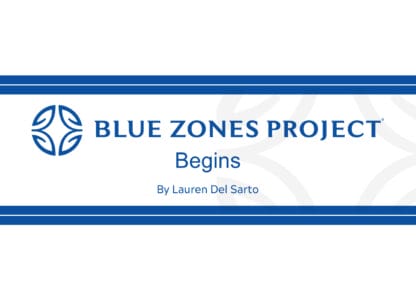Following is an excerpt from Dr. Murphy’s new 3rd edition Maximizing Performance Management: Leading Your Team to Success used at Ivy League universities and corporate venues.
Years ago, I heard the comedian Jack Benny say, “I always play up to my audience.” To me, that means being respectful, gracious and inspiring confidence in the people with whom you interact. For example, when giving a presentation, I always dress professionally, polished and a notch above the dress code of those in my audience.
In this article about executive presence, I will discuss what executive presence means, why it is important and tips to help you build yours. Executive presence is about your ability to inspire confidence. It’s about inspiring confidence in your direct reports so you’re the leader they want to follow, inspiring confidence among peers that you’re capable and reliable and, most importantly, inspiring confidence among senior leaders that you have the potential for great achievements.1
What is executive presence? It is a set of behaviors and attitudes that convey to others a level of competence, charisma, confidence, authenticity and leadership ability. It involves all elements of self-presentation – body, voice, personality and energy. It is considered the “X-factor” that organizations look for in their leaders.
One of the first articles about executive presence, “The X Factor: Executive Presence,” was written by John Byrne 20 years ago. Byrne considers it a key factor in leadership success and career advancement. “It refers to that ability to take hold of a room by making a polished entrance, immediately shaking people’s hands and forging quick, personal connections instead of defaulting to robotic formalism and shrinking into a chair. When leaders with executive presence speak, people listen. They inspire that I’ll-follow-you-anywhere loyalty, convening an aura of warmth and authenticity to everybody from the receptionist to the CEO.” Byrne found that it consists of three main components: how you act (gravitas), how you speak (communication) and how you look (appearance).2
Two leaders who embody executive presence are Oprah Winfrey for her authenticity, charisma and strong sense of purpose and values; and Satya Nadella, CEO of Microsoft, for his visionary leadership, collaborative style and fostering the culture of empowerment at Microsoft.
Developing executive presence requires self-awareness, feedback, practice and adaptation. It is important to note that executive presence is not: 1) a fixed set of traits that you either have or don’t have; 2) a matter of pedigree, appearance or charisma alone; 3) a substitute for competence, performance or results; 4) a skill that can be learned overnight or faked easily.
Expectations of leaders have changed
The pandemic, political and economic instability, social movements and new technologies have changed what people expect of leaders; however, confidence and decisiveness are still important. Pedigree has become less critical and new importance is given to inclusiveness and respect for others. Superior speaking skills and the ability to command a room still lead the list of desirable attributes, but comfort on Zoom, a “listen to learn” orientation, and authenticity are on the rise. It is crucial to project authenticity, dress professionally, have an online image and show up in person.3
Executive presence can be learned
You need to act, speak and behave as a leader. That starts with knowing what behaviors are most valued in your industry and organization, seeking guidance and then committing to the hard work of embodying those qualities in your own unique way.
As mentioned at the beginning of this article, I always play up to my audience as Jack Benny recommended. What I’ve found is that my audience may elevate their own executive presence. Recently, I was working on a long-term consulting assignment with a company full of scientists and technologists. It was fascinating to discover that some of the teams with whom I was working started dressing more professionally on the days that I worked with them. The team members mentioned that they “dressed up” on those days and found that they were more productive, focused and had more decorum during our meetings.
Dale Carnegie was an excellent listener
Dale Carnegie, author of How to Win Friends and Influence People, shared how he won a major sale by making himself memorable in a positive way. While sitting at dinner he started talking with a gentleman at his table. The man spoke for four hours while Dale Carnegie spoke for only about two minutes. After those four hours, the man stated to everyone, “Dale Carnegie is the best conversationalist I’ve ever met.” By being an active listener, Carnegie was not only portrayed as a great conversationalist, but the man instantly took a liking to Dale. Since Dale was interested in him, he was interested in Dale.4

Tips for building your executive presence
Here are some tips to build and enhance your own executive presence:
- Be compelling, credible and concise.
- Have a captivating vision of what you are working to accomplish and articulate it well.
- Understand how others experience you. Obtain feedback from your supervisors, peers and direct reports.
- Become an excellent listener. Engage with your full attention, ask great questions and explore important ideas. Demonstrate self-confidence.
- Dress professionally and make sure your appearance is not a distraction.
- Communicate with clarity and impact: in-person, in writing, virtually.
- Become good at building relationships and develop political savvy. Create a team environment.
- Learn to operate effectively under stress. Control yourself so you don’t appear flustered and overwhelmed or lose your patience.
- Be authentic so that your actions are congruent with your values and desires.
- Develop emotional intelligence.
- Never gossip as it can make you appear untrustworthy.
- Use people’s names and remember them.
- Praise and appreciate others sincerely. Be interested in others.
- Show respect for other people’s opinions and feelings.
- Encourage others to talk about themselves and their interests. Make the other person feel important and valued.
- Admit your mistakes and apologize when necessary.
Dr. Susan Murphy is a best-selling author, business consultant and speaker specializing in relationships, conflict, leadership and goal-achievement. She is co-author of LifeQ: How To Make Your Life Your Most Important Business and In the Company of Women. She can be reached at [email protected].
References: 1) Executive Presence: What Is It, Why You Need It And How To Get It Gerry Valentine, 2018, Forbes.com; 2) The X Factor: Executive Presence by John A. Byrne, Business Week, October 21, 2002; 3) HBR January 2024, The New Rules of Executive Presence, Sylvia Ann Hewlett; 4) Dale Carnegie, How to Win Friends and Influence People, Simon and Schuster, 1936.















































Comments (0)